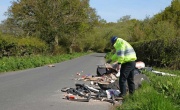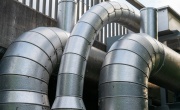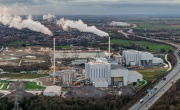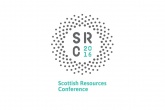Scotland close to overtaking English recycling rate
Scottish local authorities recycled 44.3 per cent of municipal waste in 2015, an increase of 1.4 percentage points from the 2014 level, according to official figures released by the Scottish Environment Protection Agency (SEPA) today (20 September).
The results mean that Scotland is close to overtaking England’s recycling rate, which in the last set of statistics published by the government, covering the 12 months to June 2015, was also recorded at 44.3 per cent. However, they also mean that Scotland is still short of the 50 per cent target it set itself for 2013 in the Scottish Government’s Zero Waste Plan.
In total, 2.46 million tonnes of household waste were generated across the country in 2015, a decrease of 2,273 tonnes (0.1 per cent) from 2014, marking the continuation of a trend that has seen the amount of waste created by Scottish households falls by just under 150,000 tonnes since 2011. This year’s figure was complemented by an increase in the amount collected for recycling of 34,411 tonnes more than previous levels.

Prior to 2014, household waste composted that did not reach the quality standards set by PAS 100/110 was included in the recycling figures. If this waste was included in the current figures, the total household waste recycled in 2015 would have been 1.10 million tonnes, leading to a recycling rate of 44.9 per cent.
The stats also show that the amount of waste going to landfill has continued to drop, with 1.14 million tonnes landfilled (46.4 per cent of household waste generated), a decrease of 72,000 thousand tonnes from the amount of household waste landfilled in 2014, and a decrease of 314,000 tonnes (21.6 per cent) from 2011.
The largest proportion of household waste material recycled or reused in 2015 were paper and card (222,600 tonnes, 31.7 per cent), followed by glass (100,830 tonnes, 14.4 per cent). The amount of paper and card recycled or reused has decreased by 17,746 tonnes (7.4 per cent) since 2011, while the recycling or reuse of glass has increased year on year during the same period, with an increase of 5,927 tonnes (6.2 per cent) since 2011.
Glasgow damaging Scottish rate
Although Scotland as a whole is not yet close to its 50 per cent target, 12 of its 32 local authorities recycled over 50 per cent in 2015, but 13 have not yet reached 45 per cent.
The top-performing authority in terms of recycling rate was the north-eastern county of Angus, which recycled 59.2 per cent of its 57,609 tonnes of waste. Moray recorded a rate of 57.4 per cent, while East Renfrewshire (56.4) and North Ayrshire (56.0) also posted rates above 55 per cent.
The largest waste generation came in the metropolitan authorities of Glasgow City (221,902 tonnes) and the City of Edinburgh (189,574 tonnes). The two major cities returned very different recycling results, though, with Glasgow achieving a rate of just 26.0 per cent, and the capital reaching 42.3 per cent. Glasgow, which accounts for nine per cent of all of Scotland’s waste, also sent the highest proportion of its waste to landfill with 73.0 per cent – 161,918 tonnes. No other council sent more than 65 per cent of its household waste to landfill.
The island councils of Shetland, Orkney and Eileanan Siar once again had the lowest recycling rates (9.2, 19.2 and 21.2 per cent respectively), but Shetland and Orkney achieved low landfill rates through energy-from-waste schemes.
Of the mainland authorities, Glasgow had the lowest rate, followed by Dumfries and Galloway (27.1 per cent) and Dundee City (33.3 per cent).

Making Things Last
In February this year, the Scottish Government published its circular economy strategy, ‘Making Things Last’, which included a Europe-first target to reduce food waste by a third by 2025. The strategy also highlights other areas that hold the greatest potential for rapid progress and significant environmental and economic benefits: the bioeconomy, remanufacture, construction and energy infrastructure.
The strategy aims to push Scotland towards a more resource-efficient future, backing innovation and development that will see more resources and products remanufactured, reused and generally kept in use, rather than going into waste streams.
The full figures and a SEPA commentary can be downloaded from the SEPA website.








